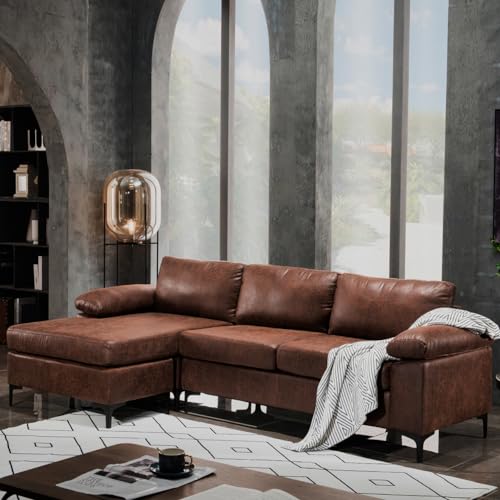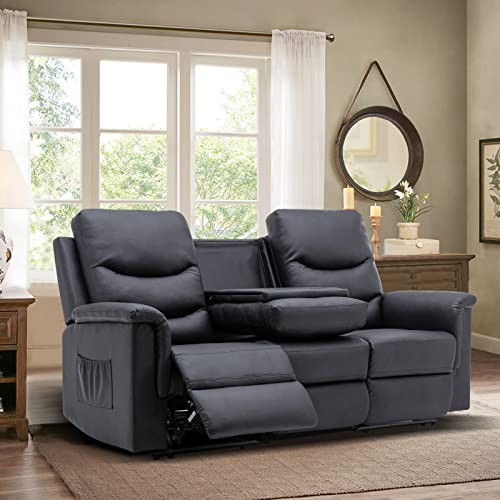교육콘텐츠 You Can Explain Real Leather Couch To Your Mom
페이지 정보

본문
 How to Tell If a Leather Couch is Real Or Faux
How to Tell If a Leather Couch is Real Or FauxDue to misleading price tags and descriptions of the product, it's sometimes difficult to determine whether you're buying a genuine leather couch. It is important to get close to the couch and look at it closely. Touch, smell and flip the cushion to examine the back.
 For example, a 'mid century leather sofa couch' CHOICE tested had upholstered "contact" areas (such as the armrests and seats) in genuine leather while 'non contact' areas were made of cotton and polyester coated.
For example, a 'mid century leather sofa couch' CHOICE tested had upholstered "contact" areas (such as the armrests and seats) in genuine leather while 'non contact' areas were made of cotton and polyester coated.1. Smell
A real leather sofa should smell rich and natural. False leather on the other hand typically smells chemically processed and artificial. If your sofa has a bad smell, it could be caused by urine or stains from pets. In the majority of cases, a thorough clean will remove any smell. If you aren't satisfied with the results of your cleaning, try applying a leather conditioner. This will restore the leather's moisture, making it softer and less fragile. It will also make it more resistant against smells.
Baking soda is an excellent natural odor remover that can be used to remove unpleasant odors from your couch. Mix equal parts of vinegar and water. Use a microfiber cloth to clean your leather sofa. If the cloth starts to accumulate dirt, you can wring it out or replace it with a fresh one. You can spray the solution onto your couch. Leave the mixture to dry before wiping it over again.
Airing your leather out is another method to eliminate smells. Place the sofa in a sun-lit area to air out. This will help eliminate unwanted odors and give it an aroma that is fresh and natural.
If you'd like to keep away from unpleasant odors, buy a leather conditioner containing healthy oils. This will stop your leather from taking in smells and will keep it smelling nice for longer.
While the scent of natural leather is appealing however, it can be difficult to keep clean. As time passes, leather will absorb odors like those from cooking, smoking and even body odor. These odors can be hard to get rid of, especially when you have pets or children. Leather couches don't trap these odors as fabric upholstery can. This is why they are a great option for families with active children.
If your couch smells akin to a pee-soaked puppy It is important to get the problem addressed immediately. You can use the tips listed above or a product such as Leather Honey to solve the issue. The best solution is to stop the problem from occurring and ensure that you teach your dog not to pee on your couch.
2. Feel
When you're looking for a brand new leather sofa There are some things to be aware of. However, the most effective way to determine if it's real is to smell it and feel it. Genuine leather has a distinct distinctive natural scent. The scent can fade with age, but there should be no mistaking it when the sofa is brand new.
A genuine leather sofa should be soft to the touch and warm to the. Leathers that are faux or bonded on the other hand tend to have a more plasticky feel and are colder to touch. To test this test, gently press your fingers to the surface of the couch and feel for bumps. If you can't feel any bumps, the contemporary leather sofa is probably bonded or faux leather.
Another dead giveaway is if you notice stitched vertical seams on the back of the sofa. This indicates that the leather isn't a continuous piece, which is a characteristic of genuine leather couches.
The quality of a frame of a sofa can have a major impact on its longevity, but it's not always obvious. To ensure that you're buying a sofa that will last, inquire about the type of wood is used to construct the frame. A solid oak frame will be the most durable and costly alternative, whereas engineered or particle board frames aren't as robust. To ensure durability, a wooden frame should also be kiln dried to prevent warping and mildew.
If you're on a budget There are plenty of low-cost genuine leather sofas that you could still be captivated by. The Room & Board Stevens Leather Sofa is one example. It is a stylish and versatile option that is often offered for sale and can be adapted to your home.
The La-Z-Boy Manual Reclining Sofa is a different budget-friendly option. It is a classic design and is available in a broad range of fabrics that are fade-resistant. This modular sofa is somewhat difficult to put together at home and the back cushions tend to slide down.
3. Backing
Real leather couches offer a unique appeal that other types of upholstery just can't compete with. Leather sofas are extremely durable and can withstand wear and tear more effectively than fabric. They last for a long time. They are also less likely to attract allergens, dust or spills. Leather couches are no different. Like any other purchase, it is important to be aware of the risks before making a final decision.
If you're unsure whether your new couch is genuine leather, the first thing you should do is look at the materials tag on the frame to determine exactly what type of fabric or leather it is made of. If you can't find any information regarding the couch's material composition or the type of leather it is, you can utilize your senses to make an informed decision.
A good way to tell is to take a closer look at the surface of the couch and examine the texture, shading, and patterns in greater detail. Real leather couches are likely to have natural imperfections and the structure, pattern or shading will not be uniform. If the surface is uniform and smooth, or if a mesh-like backing is visible instead of coarse leather, it's a dead indicator of fake or synthetic leather.
Examine the back of the cushion casing. If the cushion has a vertical stitching on its back, it is not genuine leather. This is due to the fact that hides from animals are limited in size and can be cut only to a certain extent. Top-rated manufacturers always stitch and sew the entire back of the couch to ensure that it is genuine leather and not bonded leather or faux leather.
If you are able to attempt to lift a corner of the sofa or cushion and examine the back of the cushion. If the back of padding is covered with polyurethane or a weave, then it's a sign that the couch isn't genuine leather. Genuine leather should be rough and coarse in surface that feels solid when you touch it.
4. Patterns
A leather sofa is a timeless classic with a reason. The natural, warm look and feel can elevate any living space. Modern tanning methods give it extra durability, so it is resistant to cracking or sliding. Because each hide has its own unique marks, grain, and blemishes, every leather couch is unique.
While labels and prices are excellent indicators but the best way to tell if you're buying genuine leather is to get close and personal with it. Examine the texture of the surface, its structure, and pattern for an in-depth glimpse of its genuine. If the structure of the leather is consistent and there aren't any obvious blemishes on it, then it is likely to be faux leather couch or bound.
A polyurethane back on a sofa is a different indicator. This is a typical feature of the bonded vegan leather couch. Genuine leather couches clearance will appear more natural and will be backed with materials that closely resemble the fabric used to create the furniture.
Look at the back of your couch to see if there are any vertical seams. This is a sign that the leather was constructed with care to last. If there aren't any seams, and the rear looks like a continuous cloth, then it is likely to be a faux or bonded-leather couch.
If you've concluded that a couch is genuine leather the next step is to pair it with the rest of your living room furniture. To create a clean, coordinated look, match your sofa to other wooden furniture and line it up with pillows that reflect the color scheme of your room. Or go for a more relaxed, dynamic layout by placing your couch against other furniture pieces and placing the addition of a coffee table.
Keep your leather sofa away from direct sunlight to stop it fading or developing scuffs. If you're looking to safeguard your investment by prolonging its lifespan, consider applying a leather protection agent every once or twice per year.
- 이전글The 9 Things Your Parents Taught You About Living Room Couch Sets 24.09.17
- 다음글High-Converting Social Media Marketing for Business Growth for Beginners 24.09.17
댓글목록
등록된 댓글이 없습니다.
